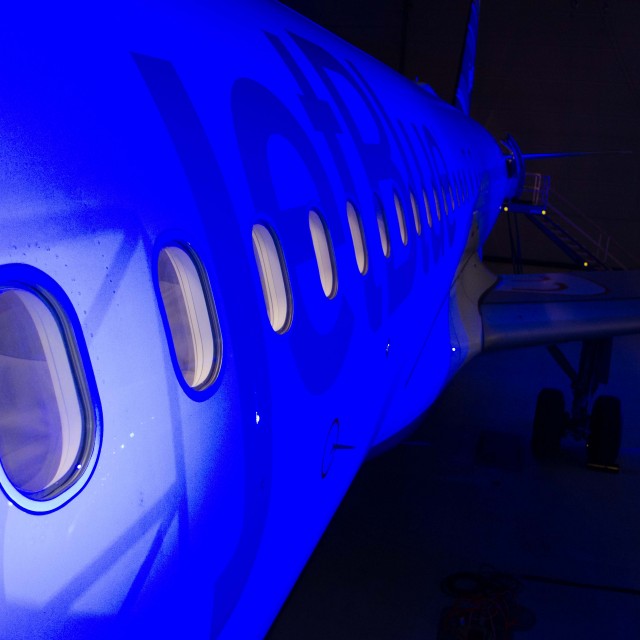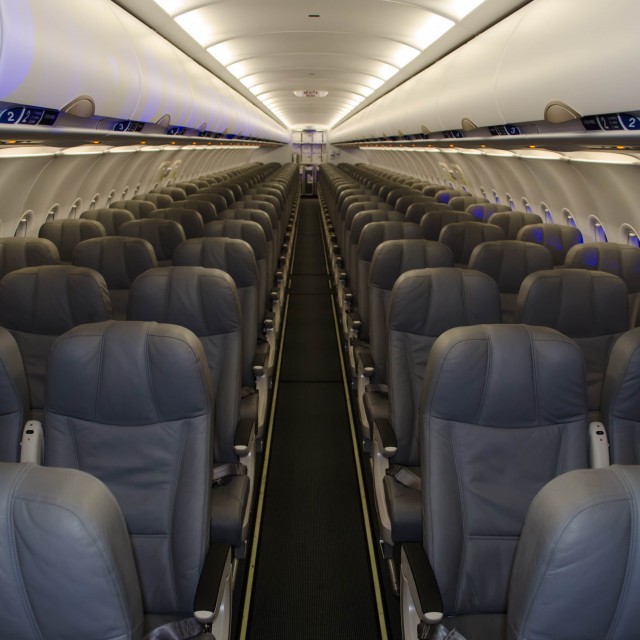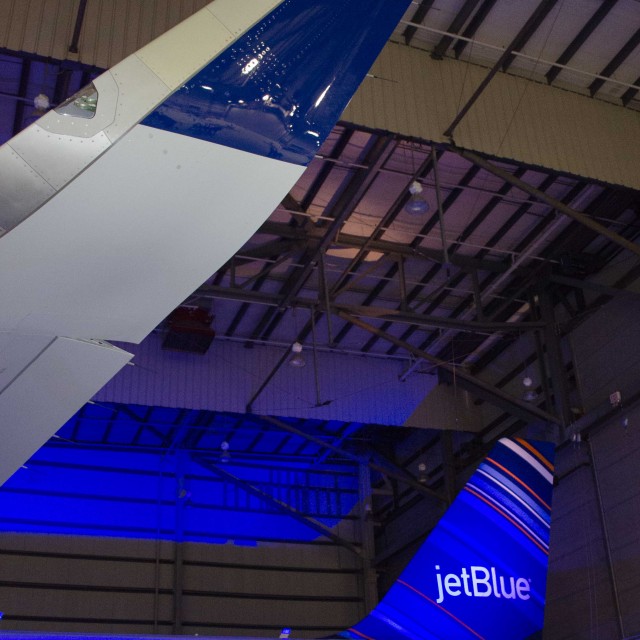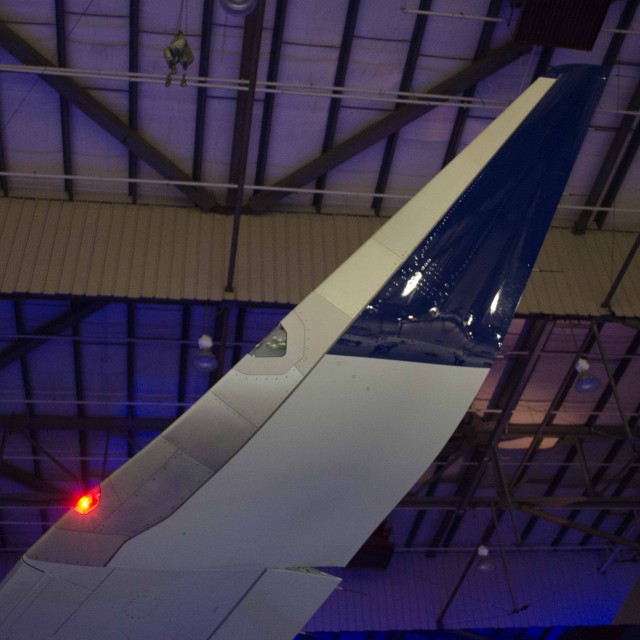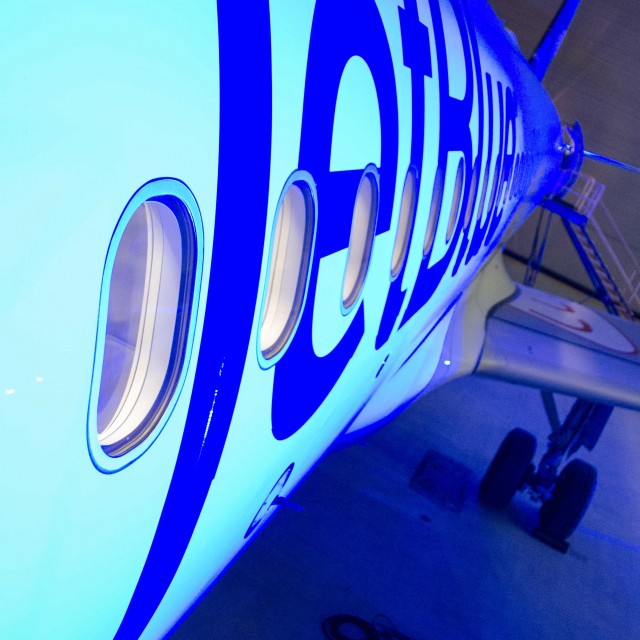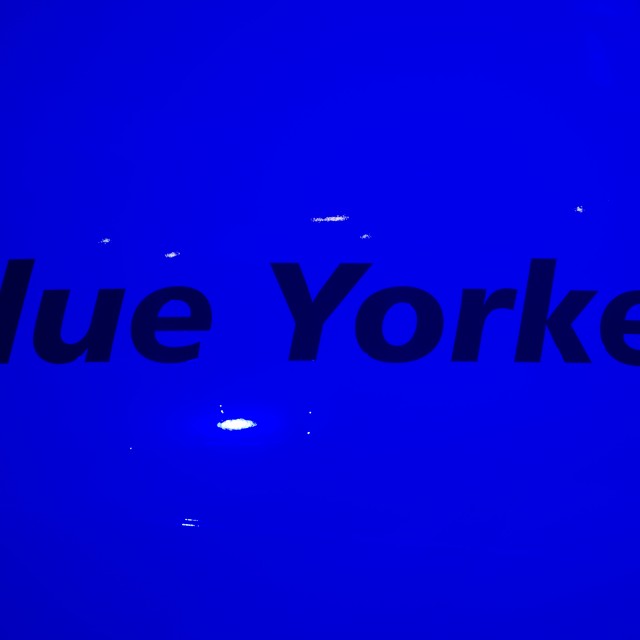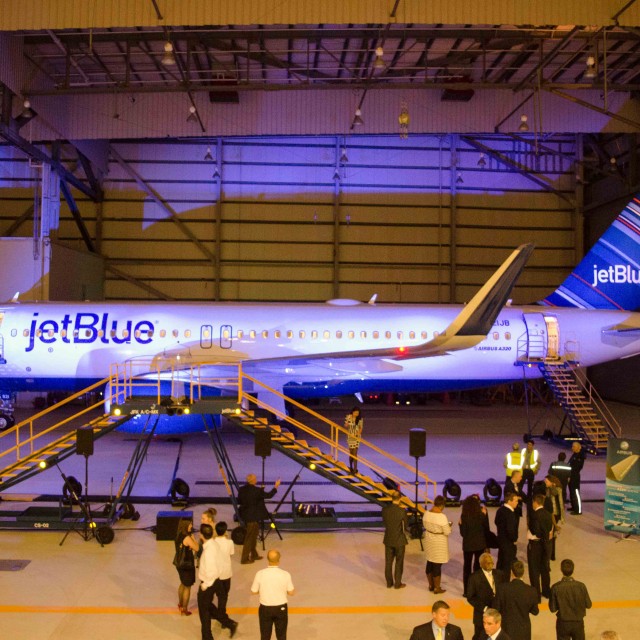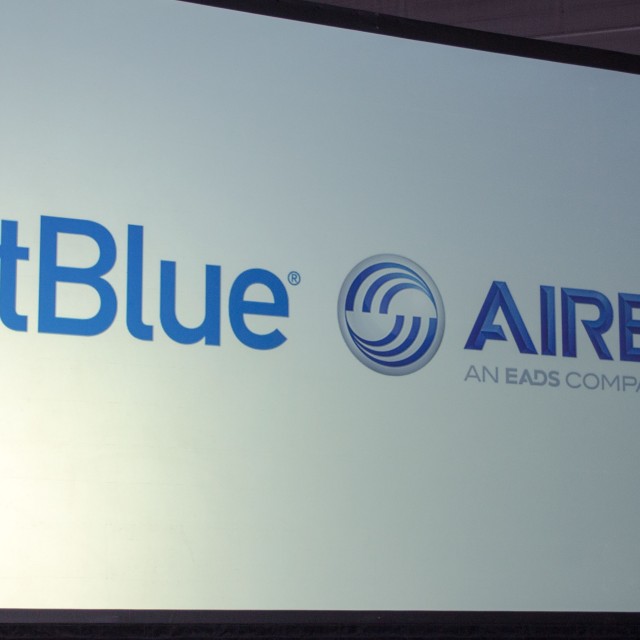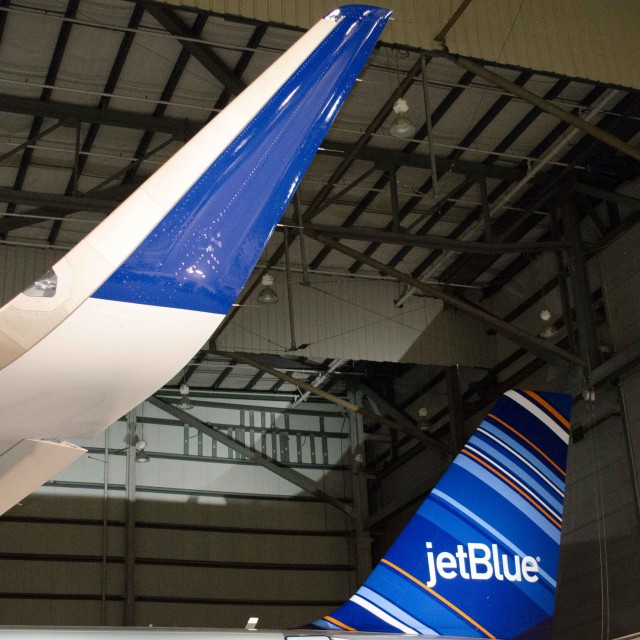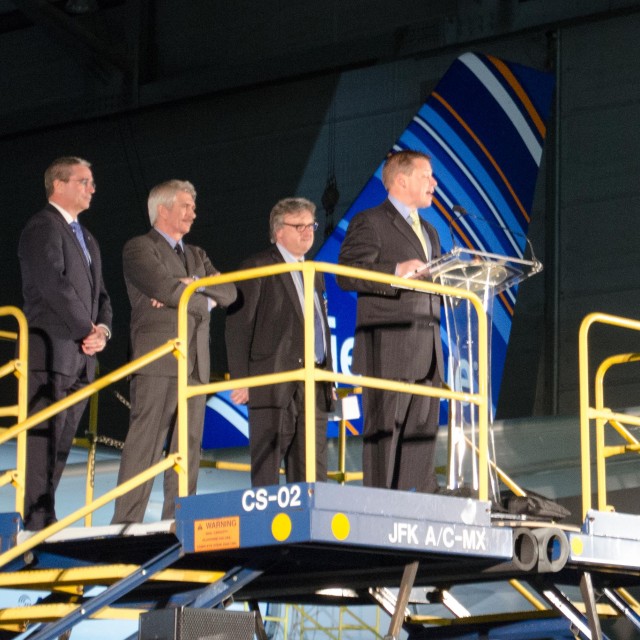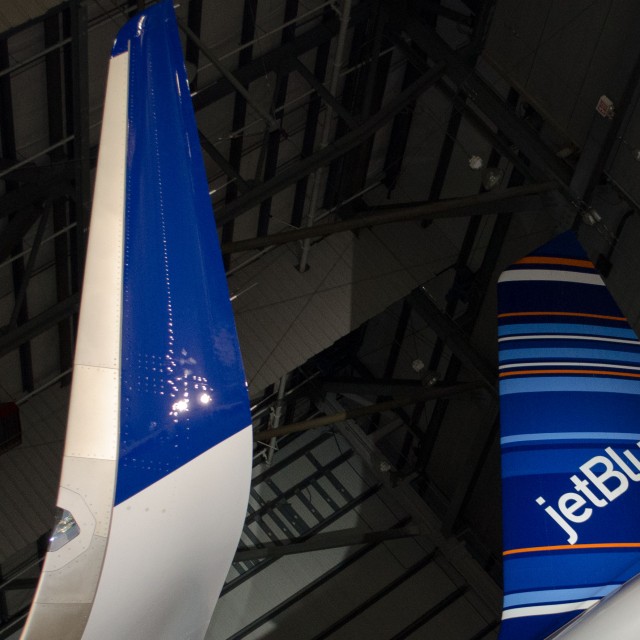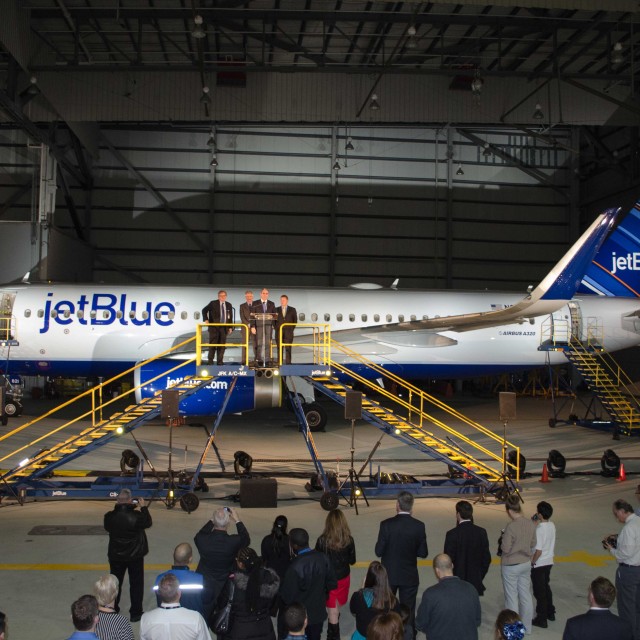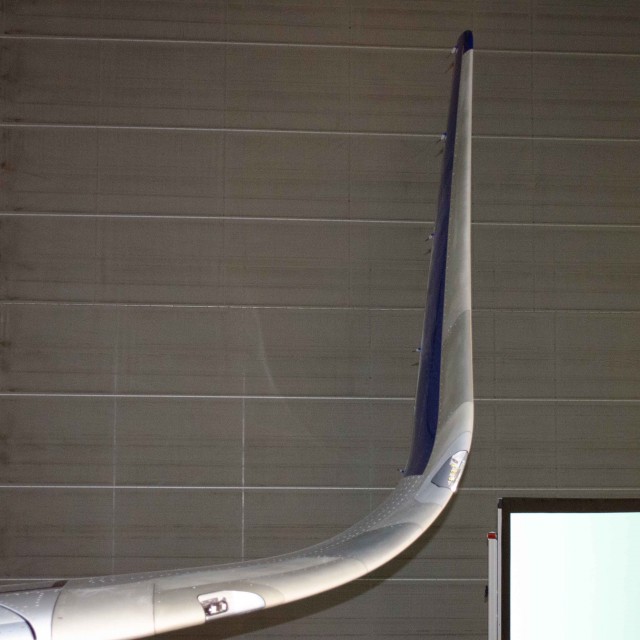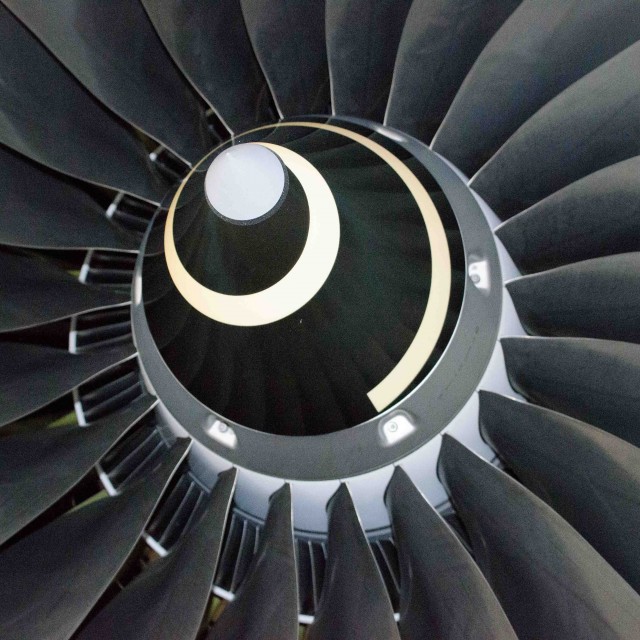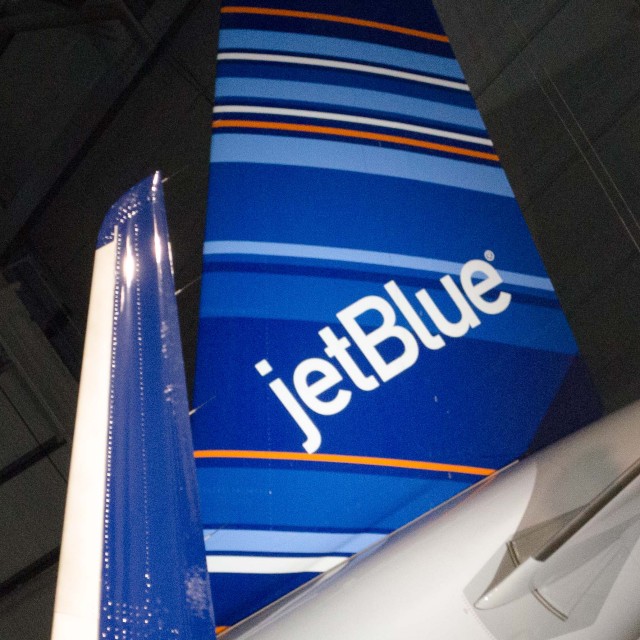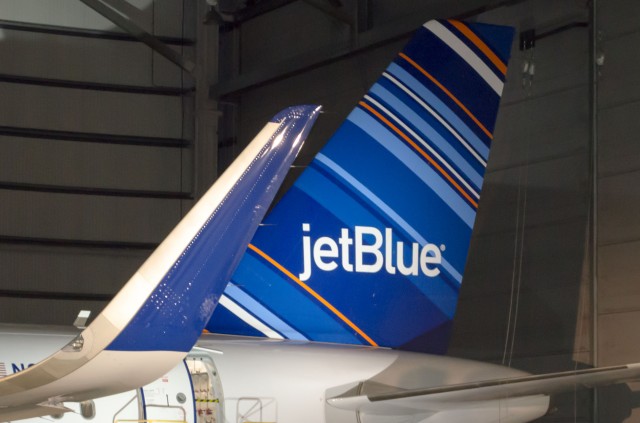
The new sharklet on a JetBlue Airbus A320. Photo by Jason Rabinowitz.
How does an airline burn less fuel, and make their aircraft look cooler in the process? The answer is simple: Winglets. Actually, in this case, sharklets. In late 2012, Airbus finally delivered their first A320 with blended winglets to AirAsia, which they have affectionately named a sharklet. Sharklets promise a reduced fuel burn of up to 3.5 percent, which leads to less CO2 emissions and greater profits air airlines.
New York based JetBlue is the first North American airline to sport sharklets, and is also the first airline worldwide to retrofit a production A320 with sharklets. The retrofit was completed by in-house technicians at the airlines John F. Kennedy Airport maintenance hanger. At an event Wednesday, JetBlue and Airbus were proud to show it off.
“I’m excited,” said Mark Powers, JetBlue Chief Financial Officer. “But I’m not excited that when the plane flies to San Francisco, its going to save us $568.75. No, no, I’m not excited about that. Nor am I excited about the fact that this airplane will save, conservatively, $350,000 a year. Nah, that doesn’t excite me either. And actually, once the whole fleet is retro fitted, were going to save $45 million a year, but that doesn’t excite me either. What really excites me, this airplane looks really cool. Winglets complete this aircraft.”
The first retrofit was completed quicker than expected, returning the aircraft to revenue service early. JetBlue plans to retrofit several A320s this year, but the entire fleet is not expected to be converted for several years. Older airframes will takes up to three weeks to be retrofitted, due to the wings requiring strengthening. Newer airframes will only require a few days to complete the process. All new A320 and A321 deliveries will include sharklets.
UPDATE: First Flight
Although no test flight was announced, N821JB did indeed take to the skies on Friday for a test flight. Here are some pictures at it departs JFK over my house.
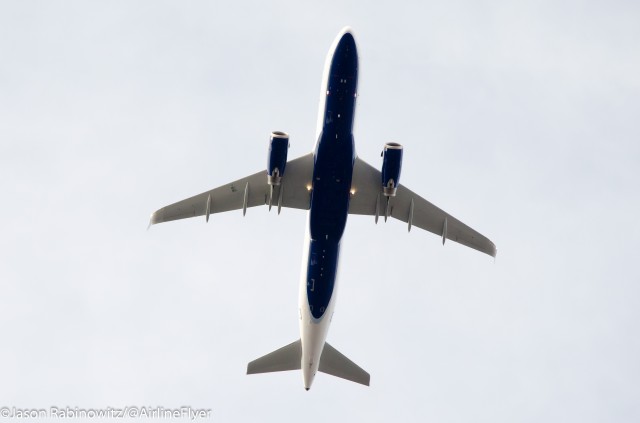
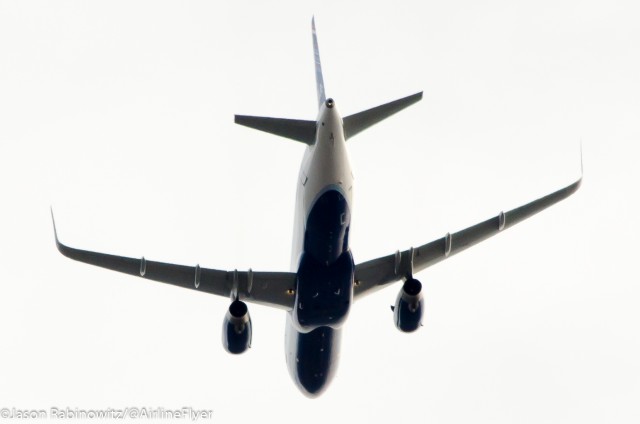
 |
This story written by… Jason Rabinowitz, Correspondent.Jason is a New York City native who has grown up in the shadow of JFK International Airport. A true “avgeek”, he enjoys plane spotting and photography, as well taking any opportunity he can get to fly on an aircraft.@AirlineFyer | FaceBook | |
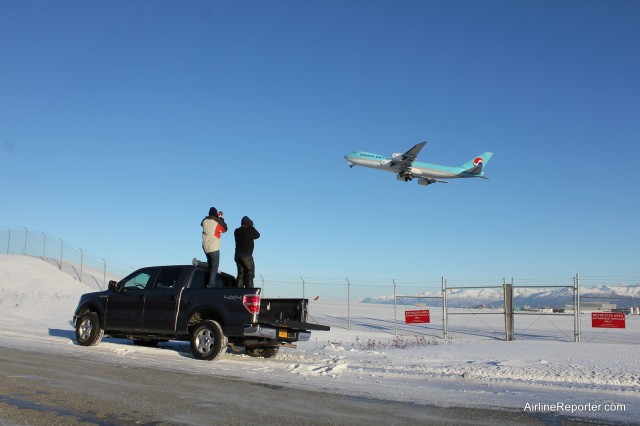
Spotters on the back of a Ford F150 taking photos of a Korean Air Cargo Boeing 747-8F.
For me, the photo above is the essence of what it means to be an AvGeek. Not many people could understand why I would be willing to get up at 3:30am in the morning, hop on a flight from Seattle to Anchorage to take photos of airplanes for the day in below zero temperatures before getting back home at about 10:30pm. If the thought of that excites you — then you are surely an AvGeek.
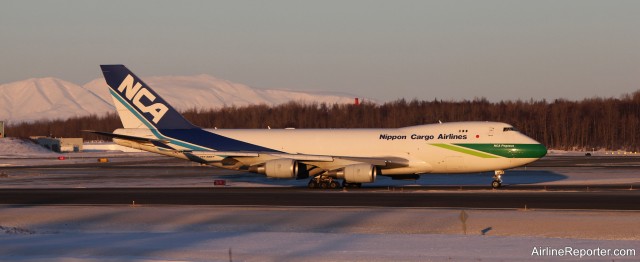
Nippon Cargo Air Boeing 747-400F in special green livery. JA04KZ.
I can admit that I am not die-hard plane spotter. I think I am probably too weak. Sitting outside waiting all day for the perfect shot normally doesn’t appeal to me. But then again, Anchorage is different. It is a main hub for large Boeing 747 aircraft to make a technical stop from Asia before continuing on their journey. So when given the chance to spot for the day (I have never done it before at ANC), I jumped at the chance. Well… I wasn’t so excited when my alarm went off at 3:30am, but it was all well worth it.
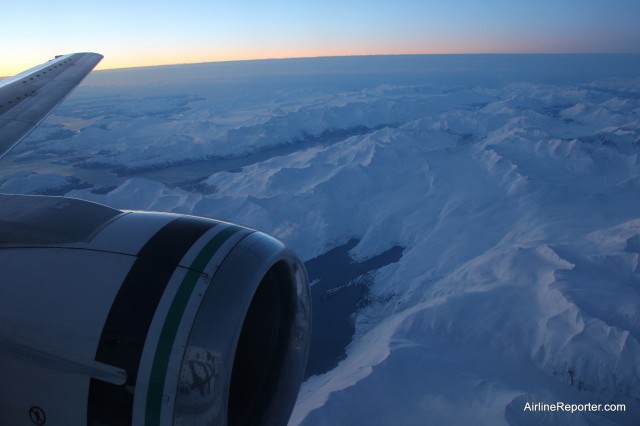
I woke up just in time to catch some of the sweet views into Anchorage.
Our flight out of Seattle went well… I think. I remember boarding. I think I remember taxiing, but I surely do not remember take off — I was asleep. After picking up our rental truck (thought we needed 4-wheel drive, but the roads were actually okay), we were off to look at airplanes.
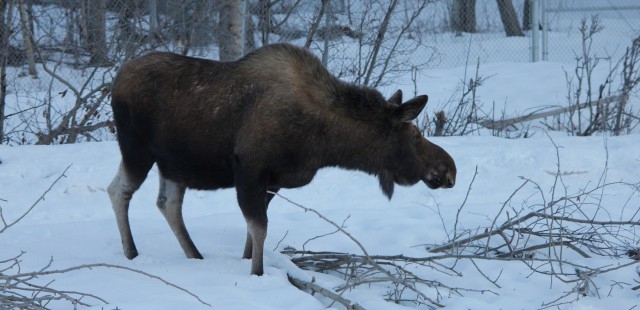
It is a bird. Nope, it is a plane. Wait, wrong again. It is a moose.
One of the first great spots that we had was not a plane; but a pair of moose (mooses? meese?). Yes, I know I looked like a total tourist pulling over to take photos of the local wildlife, but I didn’t care, I hadn’t seen one in the wild before. The moose above was interested in a bicyclist (and omg, I saw like half a dozen people riding their bikes in this freezing weather — wow) and I watched at the guy got off his bike and climbed a nice embankment to avoid the moose. I was using a long lens and stayed close to the truck — I heard that they can be quite aggressive.
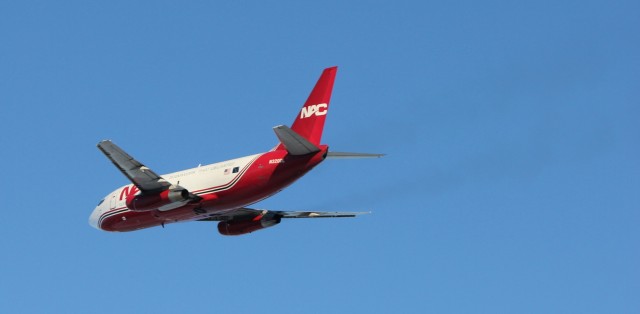
I haven’t seen a Boeing 737-200 take off in a while. Check out that smoke out of the engines.
I came prepared: long underwear, hat, gloves, multiple jackets and more. But I was still freezing. The whole -1deg F temperature wasn’t too bad, it was the 10-15mph wind that was a killer. I could only stay outside for a few minutes before having to retreat back to the warm truck (yea, I am a wuss).
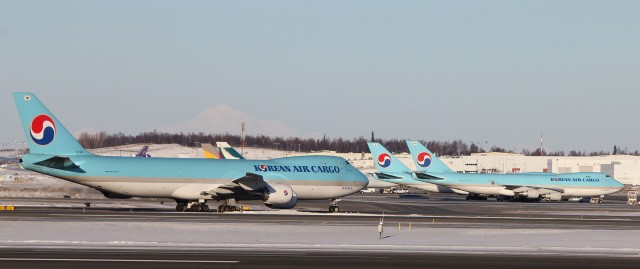
Two Korean Air Cargo Boeing 747-400F’s welcome the new 747-8F.
But I have to say that I loved spotting in Anchorage. Where else can you get a collection of small aircraft and big aircraft with almost no medium sized aircraft like this? The small ones are used to shuttle people around the region, while the large ones are mostly making technical stops to fuel up before continuing their long journeys.
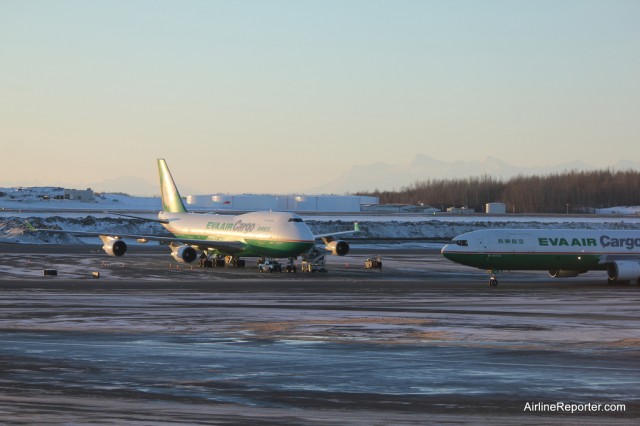
Eva Cargo Boeing 747-400F and MD-11F. Photo taken from inside the airport.
The day was long, but it went quick. We knew it would be a quick process to get through security at ANC, so we waited until the last minute to head back over to the terminal. Turns out that not only was gas pretty far away for the truck, but someone (okay it was me) missed the exit for the car rental return, so we ended up missing our flight. Luckily there was another flight to Seattle only two hours later that we were able to make.
Not everyone can understand making a day trip up to Anchorage, but that is what us AvGeeks do — I am sure most of you understand.
SEE ALL THE OTHER ANCHORAGE SPOTTING PHOTOS ON FLICKR
 |
This story written by…David Parker Brown, Editor & Founder.
David started AirlineReporter.com in the summer of 2008, but has had a passion for aviation since he was a kid. Born and raised in the Seattle area (where he is currently based) has surely had an influence and he couldn’t imagine living anywhere else in the world.
@AirlineReporter | Flickr | YouTube |
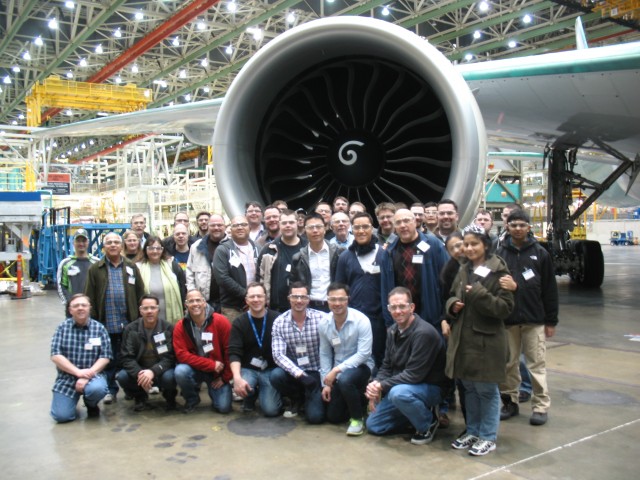
One of three Aviation Geek Fest groups that toured the Boeing Factory Floor. Photo by Boeing.
This weekend was amazing. Almost 200 people attended Aviation Geek Fest 2013 in Seattle this year — it was bigger and better than ever.
Many attendees came from the Seattle area, but we are quite a few who came from out of state: Colorado, Oregon, Minnesota, Arizona, Georgia, Florida, New York, Texas, North Carolina, Nevada, Montana, Hawaii, Massachusetts and California.
The group was also international. There were a few folks from Canada (British Columbia, Ontario and Quebec) and a father and son came all the way from Oslo Norway for the event. This has truly turned into a world event and it makes sense since Seattle is a major hub for aviation lovers. Awesome.

The point of the event is to bring aviation lovers (or AvGeeks) together to celebrate our passion and do some pretty cool things together.
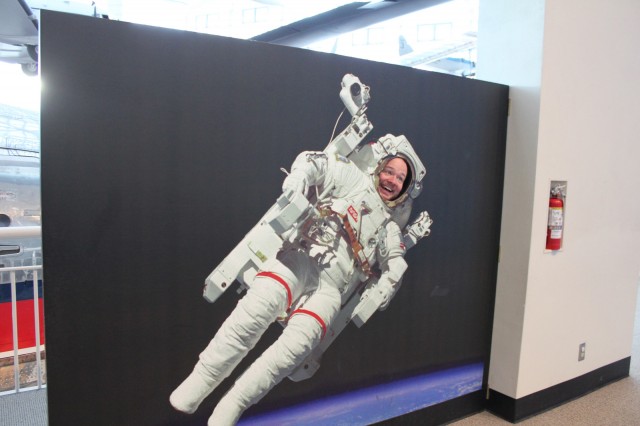
We all got to check out the new space exhibits, including the Space Shuttle trainer at the Museum of Flight. Image by AirlineReporter.com.
This was the first year where the event was two days. Saturday, the 16th, took place down south at Boeing Field and Sunday took place up north at Paine Field. Starting at 9am, AvGeeks were able to enter the Museum of Flight and start their aviation adventure.
Our group had own room up on the top floor, overlooking the runway with free coffee, tea and water — all of which was needed to keep up during the day. The 737 tour was not until, noon, which gave people plenty of time to check out the Museum of Flight.
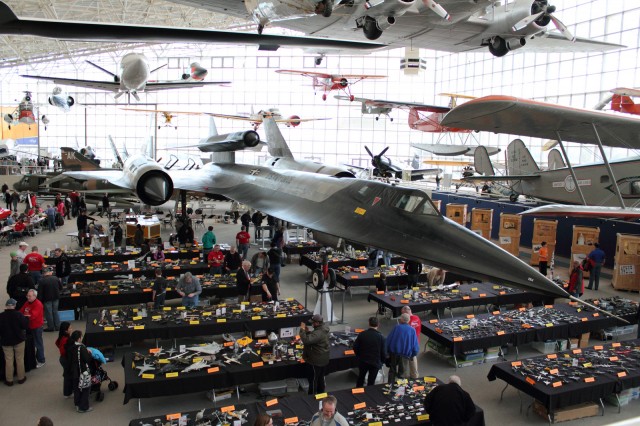
There was a model show going on at the Museum of Flight. Image by AirlineReporter.com.
I spent the morning up at #AGF13 HQ (the room at the Museum of Flight) talking aviation and airlines with all the AvGeeks that showed up. At about noon, it was time for us to prepare to get on the three buses to be taken to the Renton 737 Factory. The only down side to the tour is we were not allowed to take any of our own photos. Luckily, Boeing agreed to take some photos for us and share them.
On the ride over to the 737 factory, I Tweeted out a photo of the AvGeeks on my bus and was told they looked sad. This was because I just got done telling them, “no phones and no cameras,” then took the photo. Right after, I also explained that everyone was getting a free $20 gift card to The Boeing Store — that is when I should have taken the photo — oops.
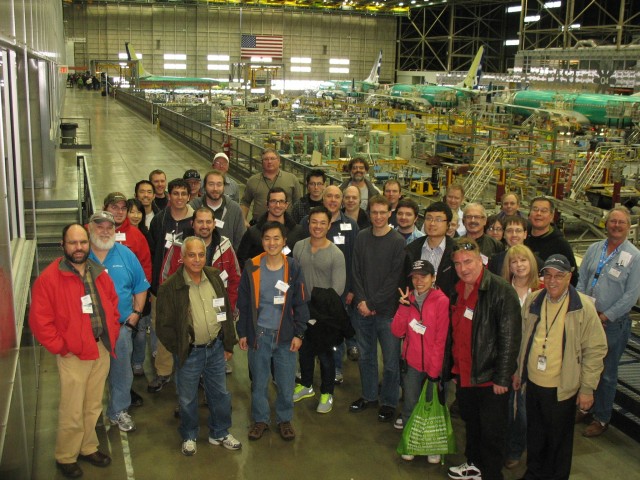
One of the AGF13 groups inside the Renton 737 Factory. Photo by Boeing.
Our 737 tour started with a few short videos highlighting the 737 and of course the new MAX. This tour was super VIP, since it is not open to the public and they stated that this was the largest group that have toured the facility. We were broken into four groups and taken down both of the 737 lines. Since it was Saturday, the line was not moving, but we all enjoyed figuring out the airlines that the 737s belonged to by the liveries on their rudders and winglets. Not too surprising, there was not one livery that could stump our group.
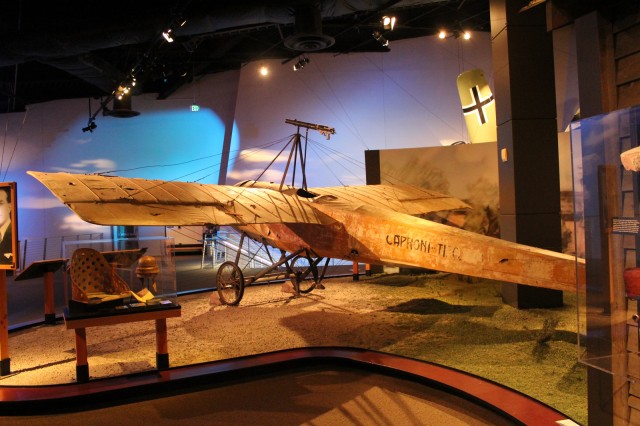
The world’s first fighter plane: the Caproni Ca.20 at the Museum of Flight. Image by AirlineReporter.com.
After the tour, it was back on the buses and we headed back to the Museum of Flight. I hadn’t been in a few years, so I took about two hours quickly going through their new shuttle trainer and checking out old friends (Concorde, first Boeing 747, Constellation, among others) in the Air Park. The museum closed at 5pm, but we were given a special after hours tour of the Personal Courage Wing, which shows off aircraft and memorabilia from World War I and II.
By the time our tour was done at 6:30pm I was quite tired. Really we only had one scheduled event: the 737 tour, but everyone was kept busy the entire day. It was a great day, but I was excited for the next.
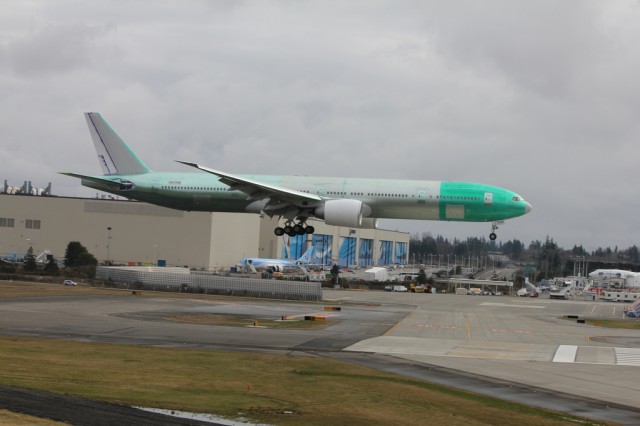
Upon arriving at the Future of Flight, we were greeted by a few Boeing 777’s viewed from the Strato Deck. Image by AirlineReporter.com.
I was up earlier than I normally am during the weekend, but I didn’t even need coffee right away, I had AvGeek adrenaline in my blood. Shortly after arriving at the Future of Flight, we were treated with a few Boeing 777 test flights, viewed from the strato deck. Like down south, we had our own AGF13 room with coffee to fuel us through the day.
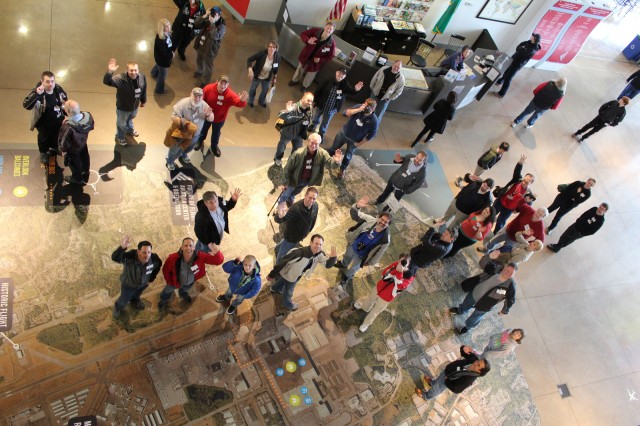
Getting ready to head to the Dreamliner Gallery, AvGeeks hang out at the Future of Flight. Image from AirlineReporter.com
Throughout the day, AvGeeks had the ability to check out the Future of Flight, Historic Flight Foundation and the Flying Heritage Collection free of charge. Although I wasn’t able to do everything, it was fun watching the #AGF13 hashtag on Twitter to see what everyone else was up to. I was hoping to get over to also see the Flying Heritage Collection and the Museum of Flight Restoration Center, but I just ran out of time — next year I promise.
Our Boeing Factory floor tour was set at 3pm. Before hand, at 10am, 11:30am and finally at 1pm, there were separate tours to the Dreamliner Gallery.
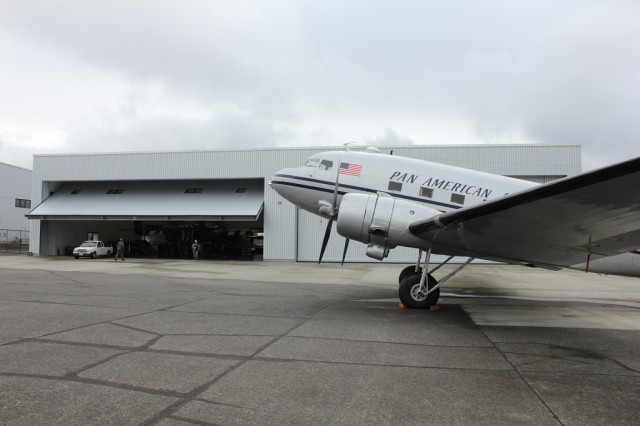
Restored Pan Am DC-3 at Historic Flight. Image by AirlineReporter.com.
My tour wasn’t until 1pm, but I was once again enjoying talking with the other AvGeeks who were hanging out at the Future of Flight. At about noon a group of us saw via social media that the DC-3 at Historic Flight Foundation was open and very quickly, we were all piled into a car and headed over. I don’t think I have seen a group of AvGeeks move so fast.
I have seen the outside of the plane before, but never the inside — she is a beauty. Historic Flight is hoping to offer rides to paying passengers later in the year (hopefully more on that in a future story).
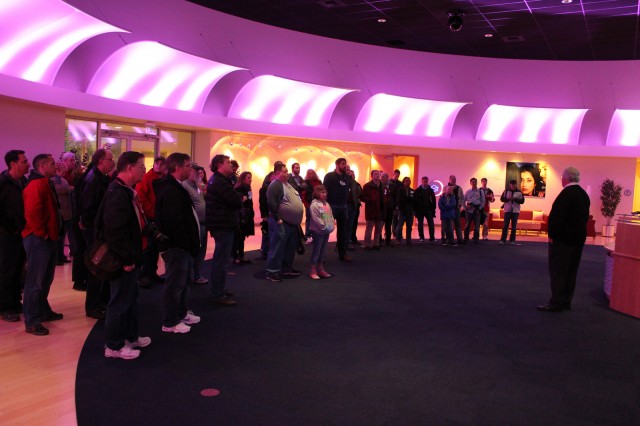
Our group got to check out the Dreamliner Gallery. Image by AirlineReporter.com.
After grabbing a quick lunch, we hurried back to the Future of Flight to catch our bus to the Dreamliner Gallery. The gallery is the place where airlines go to design the interiors of their 787’s. This is the first facility like this in the world that allows customers to figure out so many options at one place, greatly reducing the time and money spent to prepare a new aircraft to join their fleet.
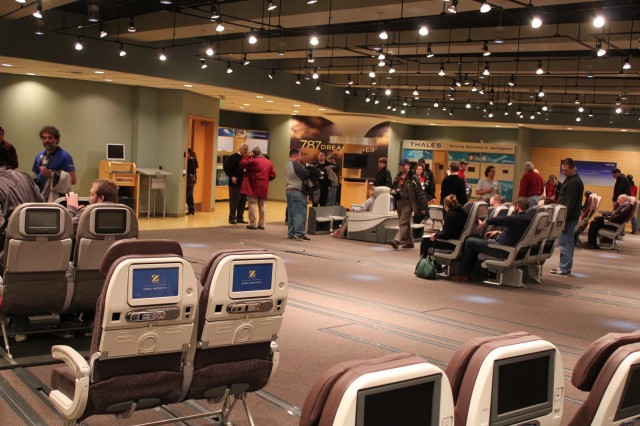
Checking out the different seating options of the Dreamliner. Image by AirlineReporter.com.
Like the 737 factory, the Dreamliner Gallery is not normally open to the public. We went room-to-room looking at seats, lighting, galley options, lavatories and even crew rest areas. None of us wanted to leave, but we were excited to take our Boeing Factory floor tour. We boarded our bus again and headed back to the Future of Flight for a short video before getting on another set of buses to be taken to the factory.
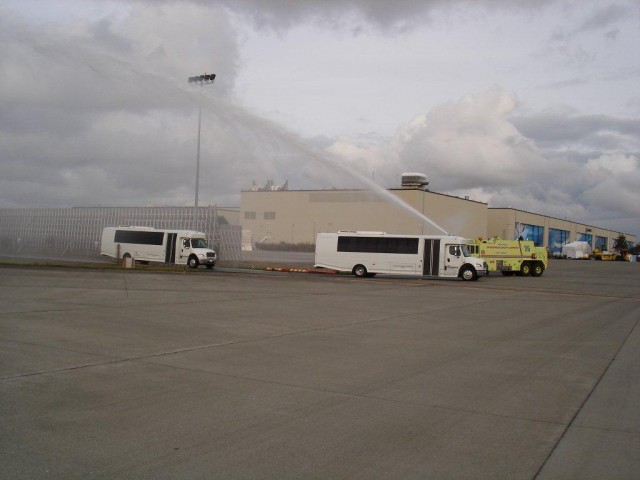
Three of the buses got a water canon salute. Photo by Snohomish County Airport Fire Dept.
It is a nice tradition that aircraft get a water canon salute — our buses were no different — at least most of our buses. We were split up into four different buses and just so happens that two of the buses (one which I was on) missed the water canon salute. The other two received a nice wash down from the Snohomish County Airport Fire Department. Kindly, one of the fire fighters took photos and shared them with us.

AvGeeks in front of a Boeing 747-8I on the factory floor in Everett. Photo by Boeing.
Our four AvGeek groups toured around the factory floor, including the new 787 surge line. I have toured the factory a number of times now, but each time is a bit different and it never gets old walking among the brand new airliners. Being on the floor is very different than the public tour that takes place up on the walking platforms. I much more enjoy looking up at a 777, 787 or 747-8 than looking down.
After our tour, it was back on the buses and to the Future of Flight for an AvGeek social with pizza and beer.
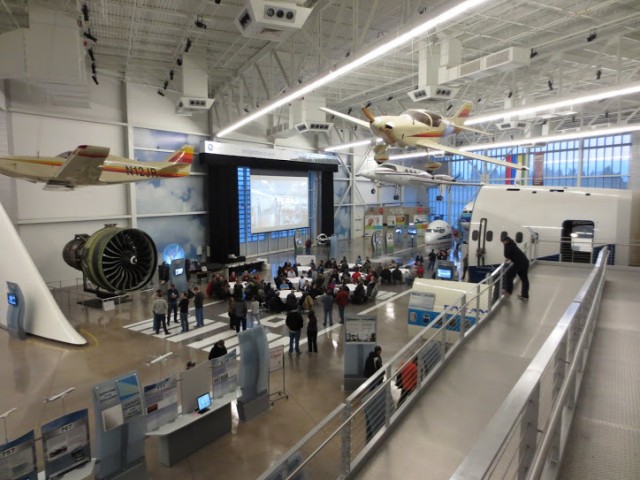
The Future of Flight gallery floor set up in AvGeek social-mode. Image by Mal Muir.
Part of the social was giving out a number of prizes, including two free tickets on Southwest Airlines. By the time I was heading home, I was exhausted — but in a good way. There was quite a bit of walking, talking and learning and I was so thankful everything went so smoothly.

Will there be an Aviation Geek Fest 2014? Heck yes there will! Start preparing now.
We are going to set the date to be President’s Day Weekend for next year, which is February 15th and 16th, 2014. The event will likely be similar with new and exciting things. Be sure to add your email to the AGF e-mail list (if you already signed up for AGF13, you do NOT need to sign up again). No details yet, but we are planning for it to be epic.
A huge thanks to…. the Future of Flight, Boeing, Museum of Flight, Historic Flight Foundation, the Flying Heritage Collection, Southwest Airlines and everyone else who helped to make this an amazing event. I cannot wait until next year!
125 PHOTOS OF AVIATION GEEK FEST
More AGF13 Goodies:
 |
This story written by…David Parker Brown, Editor & Founder. David started AirlineReporter.com in the summer of 2008, but has had a passion for aviation since he was a kid. Born and raised in the Seattle area (where he is currently based) has surely had an influence and he couldn’t imagine living anywhere else in the world.@AirlineReporter | Flickr | YouTube |
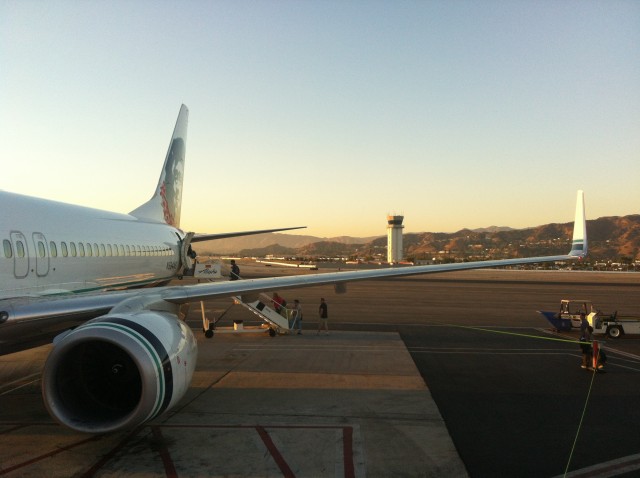
Boarding an Alaska Airlines Boeing 737 at Burbank. Image by Colin Cook.
It used to be that most major airlines shared commonalities in the way they boarded passengers. However it seems that each airline has so their own boarding processes that it’s hard to keep up. Sure, the way an airline boards likely won’t sway a decision on which airline to fly, I wanted to put together a list of how some of the major airlines operate their boarding process.
As one would expect, the majority of airlines give priority boarding to their elite level fliers. Having personally achieved even a low level MVP with Alaska Airlines I can say that I would never want to go back to being just ’œone of the herd.’ While I haven’t gone on a ’œmileage run’, there are many well documented stories of folks taking a quick trip just for the sake of achieving elite-level status.
With precious overhead space and many airlines now charging for checked luggage it’s become a race to get on board as early as possible. While some low cost carriers are now charging for carry-on bags, the major US airlines typically allow one carry-on bag (i.e. a roller bag or other bag for the overhead bin) and one personal item (laptop bag, purse, backpack, etc). Since many travelers are now bringing a large carry-on bag, boarding times have soared. An article in the New York Times suggested that boarding a plane with 140 people in the 1970’s took about 15 minutes which has more than doubled to 30-40 minutes.
Without further adieu, here is how the various airlines handle their boarding procedures (a small note: these are all the boarding requirements as found by AirlineReporter.com at the time of publishing. These change frequently, so please add any changes/ideas to the comments and listen to all gate announcements for proper boarding proceedures):
How does Air Tran board? ’“ This airline’s boarding procedures will undoubtedly change as the integration into Southwest takes place over time. Southwest operates a 737 only fleet and is in the process of subleasing Air Tran’s Boeing 717 planes to Delta. Presently, Air Tran pre-boards unaccompanied minors, passengers traveling with an infant, and passengers needing special assistance prior to general boarding. Like many other airlines, Air Tran utilizes a zone boarding process.
How does Alaska Airlines board? ’“ Being based in the Pacific Northwest, I fly Alaska more than any other airline. Their boarding process is pretty straightforward. They don’t mess around with zones or boarding groups and have a seemingly more streamlined approach. They begin with preboarding ’“ those customers who are traveling with children or need some additional time to get down the jet way. After preboarding, they invite First Class, Alaska Airlines MVP and 75k elite level fliers. Next are passengers seated in row six of the main cabin (bulkhead row at the front of economy) and Alaska MVPs and partner elites. After that, they board from the rear of the plane starting with passengers seated in row 15 and higher. Finally they open to general boarding at that point. It’s a pretty well organized system and tends to work well.
STORY: Flying First Class on Alaska Airlines
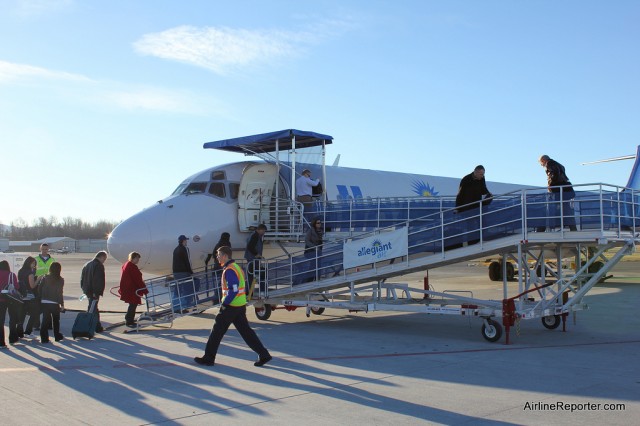
Boarding an Allegiant MD-80 in Bellingham. Image from David Parker Brown / AirlineReporter.com.
How does Allegiant board? ’“ Allegiant offers many different add-ons to their standard fare and does a nice job of providing ala carte service where you can add additional services to their basic fare. Among their options are Priority Boarding for $9.99 (allows you to board first), Premium Seat Selection $9.99 (an assigned seat near the front or exit row), Standard Seat Assignment $6.99 (assigned seat towards the back of the plane). You can certainly opt to fly without paying any of those additional fees, but be prepared to sit in a middle seat. Their boarding process allows people that paid for priority boarding to board first, followed by those who need a little extra time. Then passengers who paid for the standard seat assignment are allowed to board followed by those who do not have seat assignments but have young children. Lastly it goes to open seating and people get to fend for them self to find an open seat.
STORY: Flight review flying Allegiant Airlines
How does American Airlines board? ’“ American is one of the airlines that actually disclose their boarding process on their website. Many airlines do not give a specific process but simply expect you to pay attention when you get to the airport. American employs a process similar to most of the other legacy carriers in that they give priority to elites and then general boarding. Their process consists of preboarding First Class, Uniformed Military, AAdvantage Executive Platinum, and oneworld Emerald. On aircraft with three class service, Business Class is boarded next. The next group consists of AAdvantage Platinum and oneworld Sapphire, followed by Priority AAccess and oneworld Ruby. From there, American is in the home stretch boarding groups 1-4. Of course this could all be changing with the airline merging with US Airways.
STORY: Taking American’s 737 Sky Interior Delivery Flight
How does Delta Air Lines board? ’“ The world’s largest airline by passengers carried and fleet size has developed a good reputation among both business and leisure travelers. They utilize a zone boarding process similar to many of the other large airlines. They first offer preboarding to their Sky Miles Medallion elite level fliers (Diamond, Platinum, and Gold) and passengers traveling in the first class cabin. On international flights they then invite passengers traveling in BusinessElite, Sky Miles Medallion Silver frequent fliers, and partner elites to board. Delta then begins general boarding via a zone process beginning from the rear of the aircraft. Depending on the size of the plane and whether it is an international or domestic flight, Delta can have as many as nine different boarding groups.
How does Frontier Airlines board? ’“ Denver’s hometown airline has been undergoing some big changes in recent years. Frontier uses a zone boarding style similar to many other carriers, beginning with preboarding for passengers with special needs, which include passengers who need assistance and unaccompanied minors. Similarly to Jet Blue’s Silent Boarding group, they do not announce a special boarding for this group. The one nice thing is that you don’t have to make a reservation in advance for the extra time, whereas you do on Jet Blue. Frontier then invites their Summit Members to board which is the top tier of their EarlyReturns frequent flier program. They then begin priority boarding and Zone 1 which includes Ascent members (second tier of EarlyReturns), as well as people traveling on a Classic Plus fare or seated in Stretch seating. Next, they invite families with small children and passengers requiring additional time or assistance to board. They also have a separate boarding group here for people who are not utilizing overhead bins (it pays to pack lightly). After that, they begin boarding with Zone 2, which are passengers in Select seating. Finally, they board Zone 3 which is pretty much anyone else. So while Frontier technically only has three zones, they really have seven different boarding groups.
STORY: Review flying Frontier Airlines to Denver and back
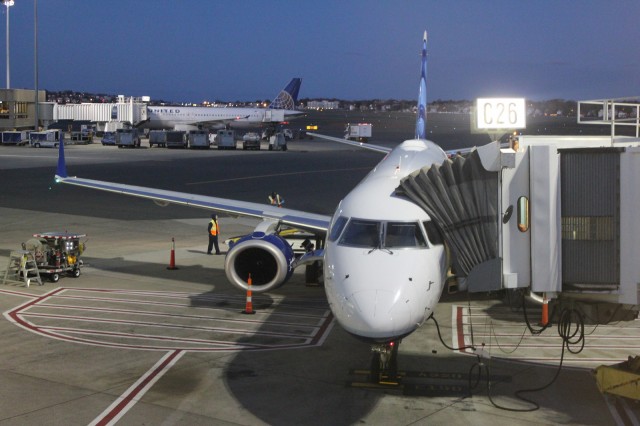
A JetBlue E-190 in Boston. Image from David Parker Brown / AirlineReporter.com.
How does JetBlue board?’“ As is typically true with most things JetBlue, they try to keep their boarding process simple. They begin with pre-boarding which they call Silent Boarding. This is a service that must be requested in advance and is designed for people who have requested or appear to need additional time boarding. The interesting bit is that they do not make a gate announcement (hence the Silent Boarding name), so it is up to you to request this service and show up at the right time. After Silent Boarding they begin priority boarding for Mosaic and Even More Space customers. Mosaic is their elite level program which has many of the same benefits as competitors (priority security lane, preferred seating, 2 free checked bags, bonus points, and dedicated customer service line). Even More Space is an option that you can select when booking and just like it name suggests you get more space.
JetBlue then invites families with children under the age of 2 and other individuals who need additional time to board. It’s interesting that they have their Silent Boarding and then a separate pre-board for people who may need additional time. Finally, they board from the rear of the aircraft forward in five row increments. This begins with individuals in rows 20-25, then 15-25, 10-25, and lastly 5-25.
STORY: Flying JetBlue from the Bahamas to Boston in an E-190
How does Southwest Airlines board? ’“ Southwest is unique since they do not actually assign seats. So it’s still important to get a good boarding group to ensure a good seat and overhead storage. Their overall process contains a boarding group (A, B, or C) and a number (1-60) and they have passengers queue up in the boarding area in a line according to the boarding group and number. Some have called this process a “cattle call,” but really it seems like less people end up standing around waiting to be called than with other methods. Alternatively, you can buy a Business Select or EarlyBird Check-In to be among the first to board. For frequent fliers, it is a pretty simple boarding process, but it seems that people who do not fly often, easily get confused on how to board a Southwest plane.
STORY: Guide to getting a good seat on Southwest Airlines
How does Spirit Airlines board? ’“ Spirit is the ultimate King of low cost travel and their boarding process and baggage policies reflect that. Like Allegiant, their base fares are always amongst the lowest but Spirit is betting you will purchase additional services. They not only have fees for seat selection but also other amenities such as checked baggage and soft drinks on board. Spirit employs a zone boarding process similar to many airlines with some differences. They allow unaccompanied minors and others requiring assistance first, followed by folks sitting in their Big Front Seats (first row or two depending on aircraft that are in a 2-2 layout and have better seat pitch), and then the remaining zones 2, 3, & 4. The one difference is that they board from the front to the back.
How does United Airlines board? ’“ No sooner than I finished writing the original section on United, the airline made yet another change in their boarding process. This marks the fifth time in less than two years that the airline has changed their procedure. This is not surprising as mergers always result in some chaos, but it would seem smart for the airline to stick to one process for a while — hopefully this one will stick.
Under the new process, they begin with pre-boarding of customers with disabilities, Global Services, and uniformed military personnel. Following that, Group 1 is invited to board which included Global Services (for customers that did not pre-board), Premier 1K, Premier Platinum, and their premium cabins. Group 2 is essentially for all of the United and partner elite fliers including Premier Gold and Silver, Star Alliance Gold and Silver, MileagePlus Presidential Plus and Club cardholders, MileagePlus Explorer and Awards cardholders.
It’s interesting that United does not give greater priority to their Gold and Silver level fliers ’“ someone who holds their credit card is given the same boarding priority. United has really been pushing their Explorer credit card so it’s no surprise they used priority boarding as a selling point. United then opens up for groups 3-5 for general boarding from the rear of the aircraft. Unlike other airlines, they no longer give priority boarding to families traveling with infants or young children. Those families must board when their group number is called.
How does US Airways board? ’“ Much like other legacy carriers, US Airways uses a zone boarding process. They begin with preboarding of First Class / Envoy, Preferred members of their Dividend Miles program, and Star Alliance Gold members. After preboarding, zone 1 consists of the bulkhead row and exit row seats without under the seat storage. It’s interesting that they allow exit row seats without under the seat storage to board early. I realize that these folks have responsibilities since they are in the exit row, but does it really take them longer to board?
Zone 2 is made up of US Airways Premier World MasterCard holders, US Airways Visa Signature card holders, ChoiceSeats, and Exit row seats with under-the-seat storage. Much like United, they have given their credit card holders a priority boarding group. At least the elite members of their Dividend Miles program get a higher priority (United has the same boarding priority for Gold and Silver elites as they do for their credit card holders). Finally they board from the rear forward beginning with zones 3-5. It’s a fairly straightforward process which is nice.
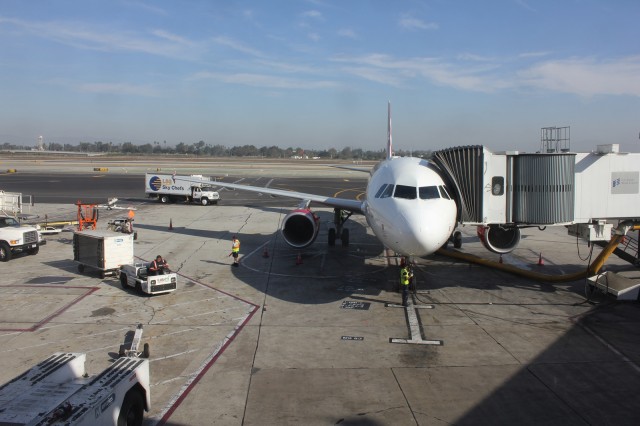
Virgin American Airbus A320 at LAX. Image by David Parker Brown / AirlineReporter.com.
How does Virgin America board? ’“ Virgin American starts with allowing their First Class passengers to board before allowing folks with children and disabled people who need a little more time. Then they move on to Main Cabin Select, which are in the first row of economy and the exit rows so they have more legroom. The Main Cabin Select fare also comes with complimentary food and drinks and one free checked bag. After those two groups, they board the Main Cabin Express group. Ultimately, this is just an add-on that you can purchase to be among the first to board.
Being that I really like to be sit near the front and be able to get off the plane as soon as possible, this fare is quite appealing. Finally, they move on to a group based boarding process, starting with A and moving through the alphabet. I recall on one flight it went groups A-D, but on another it went A-F.
STORY: Flying in Virgin America’s First Class
Hopefully this article can provide some insight the next time you are traveling and are curious about how different airlines board. In the comments, be sure to talk about your boarding experiences and which processes do you like (or hate the most)?
Related links in airline boarding:
 |
This story written by…Colin Cook, Correspondent.Colin is an avid AvGeek who works in finance and is based in the Seattle area. He has an immense passion for aviation and loves to travel as much as possible.
@CRoscoe2121 |
 And so it begins: Aviation Geek Fest 2013. There were 420 tickets sold, 206 different people are expected to attend, 30 folks were left on the wait list (sorry) and the farthest someone flew for #AGF13 is 4500 miles.
And so it begins: Aviation Geek Fest 2013. There were 420 tickets sold, 206 different people are expected to attend, 30 folks were left on the wait list (sorry) and the farthest someone flew for #AGF13 is 4500 miles.
Today, we are going to be meeting at the Museum of Flight and checking out the Boeing 737 factory in Renton. SEE THE FULL AFG13 SCHEDULE.
If you were not able to make it this year, no worries — you can follow along via Twitter and Facebook. Also, check out the live feed below:
Want to join in for Aviation Geek Fest 2014? Make sure you are on the e-mail list(I know the page says AGF13, but it will become the AGF14 list). Until then — CHEERS!


